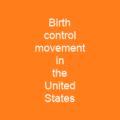Emergency Contraception: A Lifeline After Unprotected Sex
Have you ever found yourself in a situation where you needed an immediate solution after unprotected sex? Emergency contraception (ECP) is your answer, offering a lifeline to prevent pregnancy. But what exactly does it entail?
Types of Emergency Contraception: A Quick Overview
Emergency contraception comes in various forms, including emergency contraceptive pills, intrauterine devices (IUDs), and tablets taken by mouth. These methods are designed to be used after sexual intercourse as a last resort.
Emergency Contraceptive Pills: A Closer Look
There are several types of emergency contraceptive pills available, each with its own unique characteristics. Progestin-only pills, such as those containing levonorgestrel, can be effective up to 72 hours after intercourse. Antiprogestin pills like ulipristal acetate and mifepristone offer an alternative, with the former being effective for up to 120 hours.
Effectiveness and Usage
The effectiveness of ECPs is often expressed as a percentage reduction in pregnancy rates. For instance, progestin-only pills have an 89% effectiveness rate, while the combined regimen (Yuzpe) has estimates ranging from 47% to 83%. The World Health Organization suggests that reasonable effectiveness may continue for up to 120 hours after intercourse.
Side Effects and Adverse Reactions
The most common side effect of ECPs is nausea, with levonorgestrel-only users experiencing rates between 14-23%, while Yuzpe regimen users experience a higher rate at 50.5%. Vomiting is less common and unusual with levonorgestrel-only ECPs. Anti-emetics are not routinely recommended for levonorgestrel-only ECPs, but if vomiting occurs within two hours of taking the pill, an additional dose should be taken as soon as possible.
Mechanisms of Action
The primary mechanism of action for progestin-only emergency contraceptives is to prevent fertilization by inhibiting ovulation. Progesterone receptor modulator emergency contraceptives and copper-releasing IUDs have different mechanisms, each designed to disrupt the process in unique ways.
Historical Context: A Journey Through Time
The development of ECPs began with high-dose estrogen pills in the 1960s. The Yuzpe regimen became the standard course of treatment for postcoital contraception in many countries by the 1980s. In 2002, China became the first country to register mifepristone for use as emergency contraception, and in 2020, Japan announced it would consider easing regulations on the sale of emergency contraceptive pills without a prescription.
Regulatory Approvals: A Timeline
In the United States, the FDA approved off-label use of certain brands of regular combined oral contraceptive pills for emergency contraception in 1997. By 2006, nonprescription behind-the-counter access to Plan B was granted to women 18 or older. On March 23, 2009, a US judge ordered the FDA to allow 17-year-olds to acquire Plan B without a prescription.
Accessibility and Legal Considerations
The availability of ECPs does not increase sexual risk-taking or decrease abortion rates at a population level. However, adherence to best practices varies significantly. The development of ECPs has been met with both support and controversy, as seen in the historical context of regulatory approvals and legal challenges.
Conclusion: A Call for Accessibility
Emergency contraception is a vital tool in preventing unintended pregnancies. Its availability should not be hindered by religious or moral objections, ensuring that all individuals have access to this critical health service. The journey towards making ECPs more accessible continues, with ongoing efforts to improve and expand their use.

You want to know more about Emergency contraception?
This page is based on the article Emergency contraception published in Wikipedia (retrieved on January 24, 2025) and was automatically summarized using artificial intelligence.






